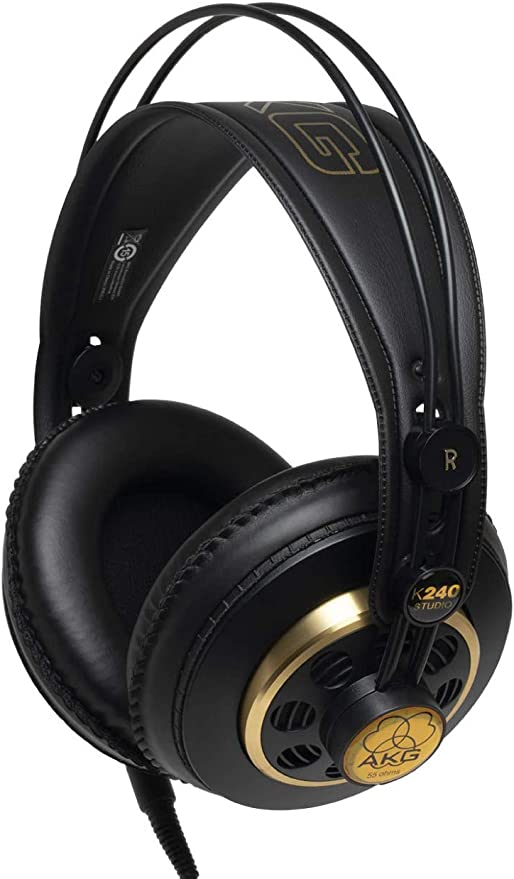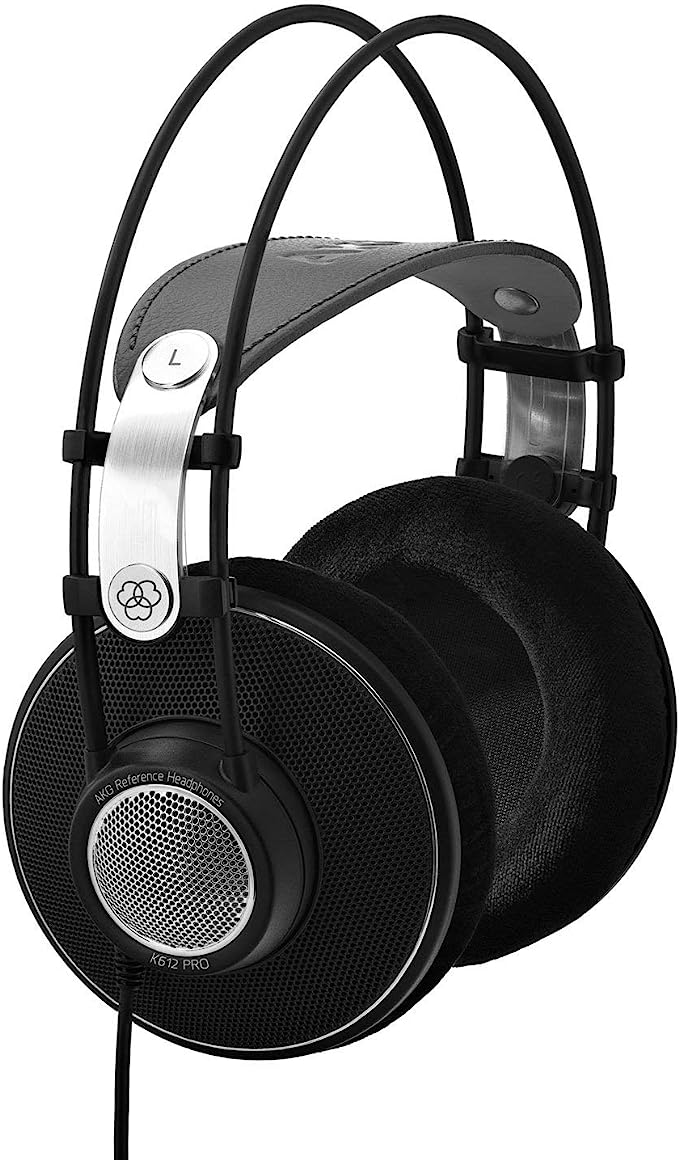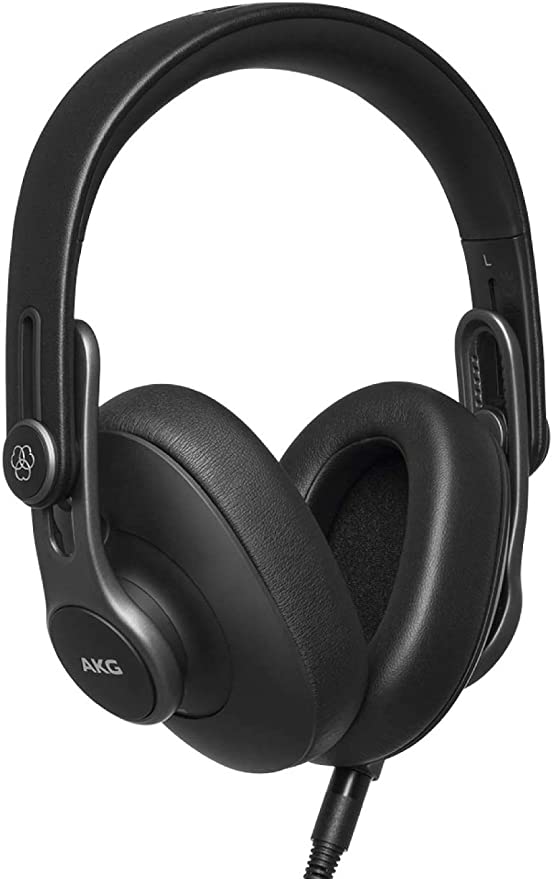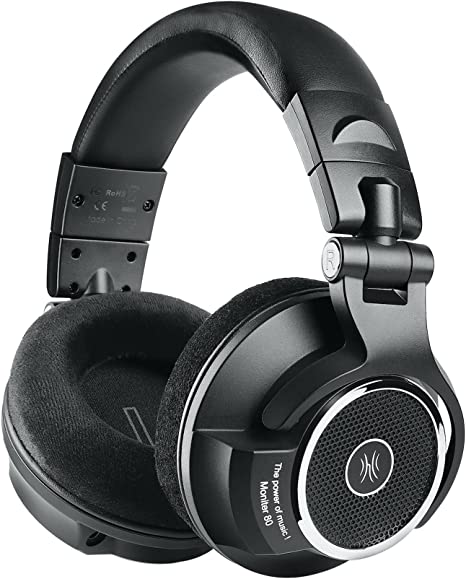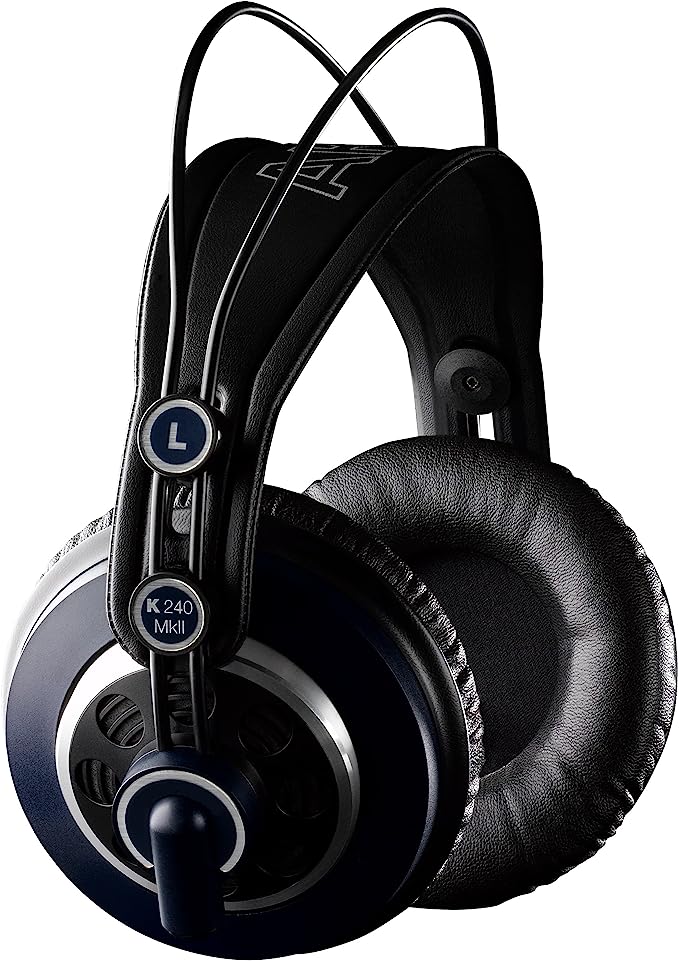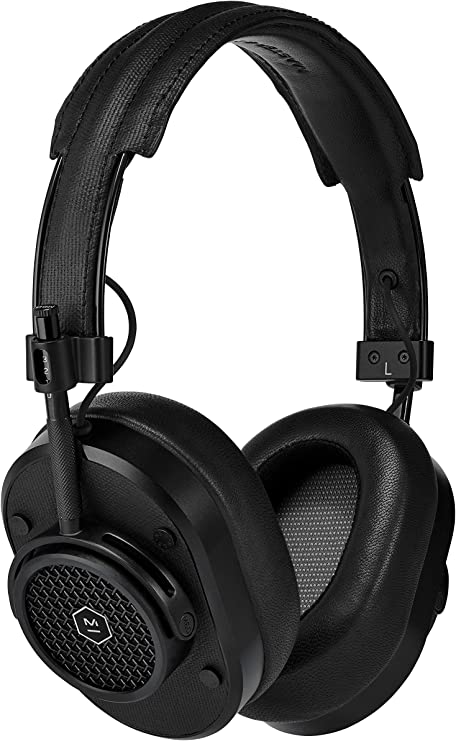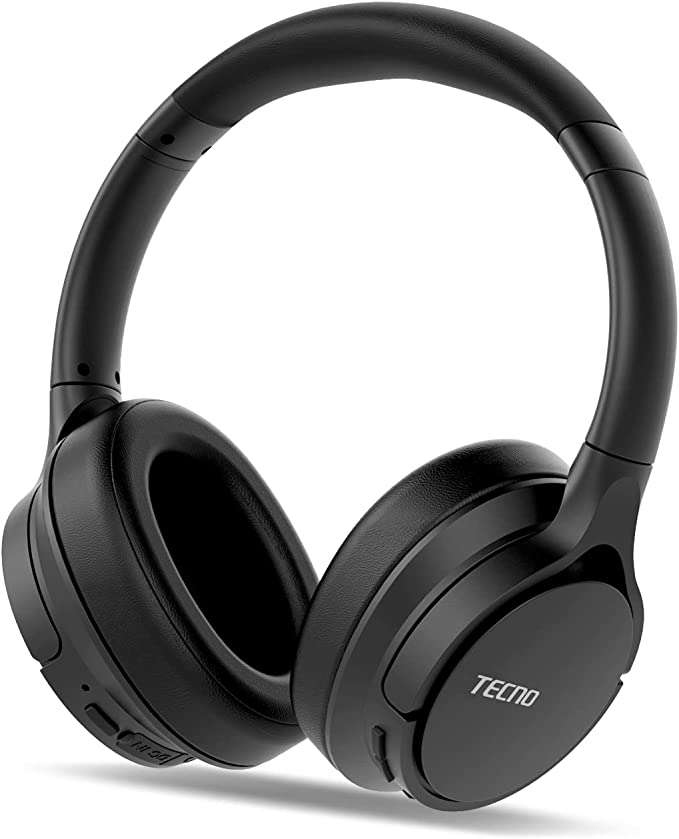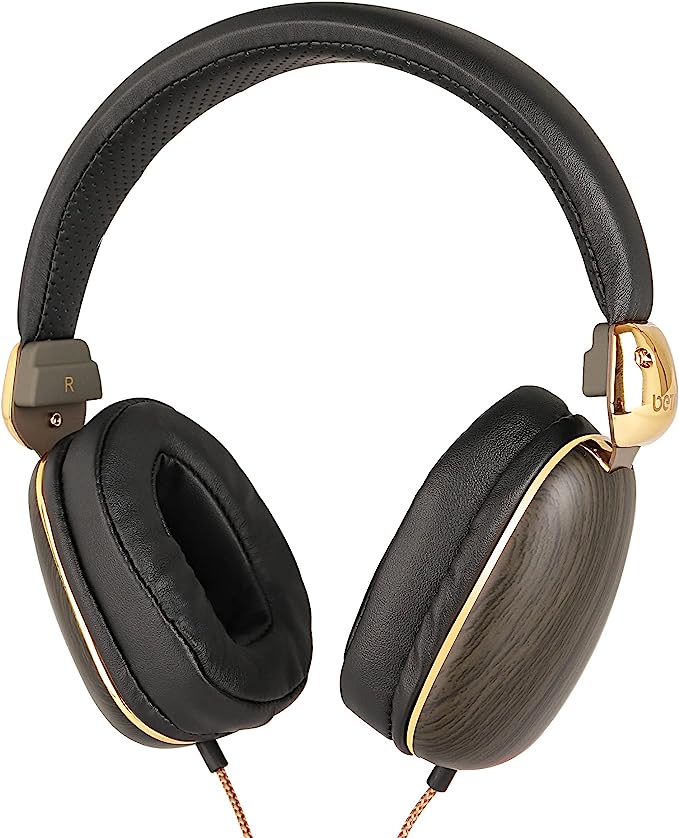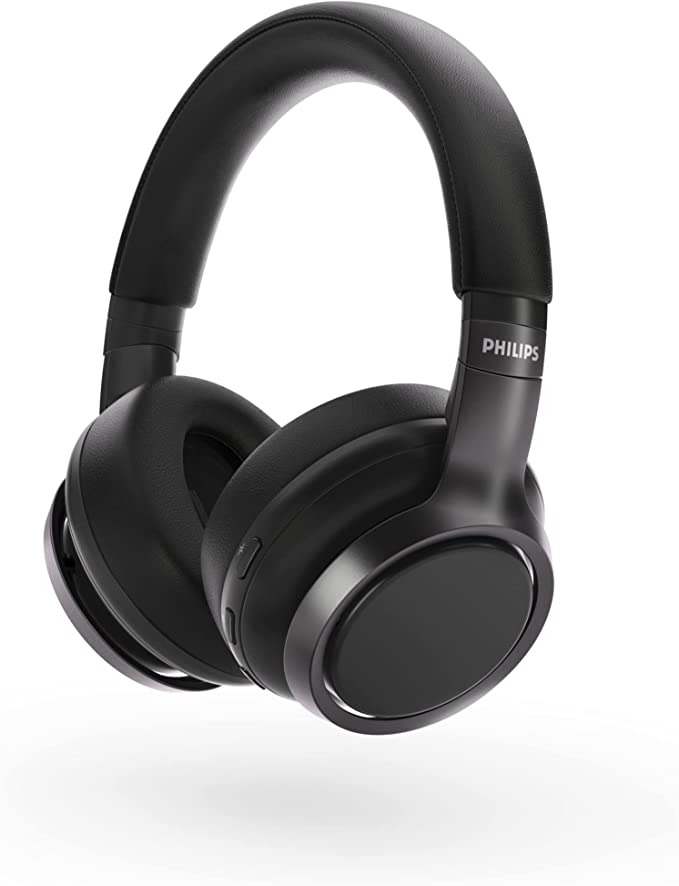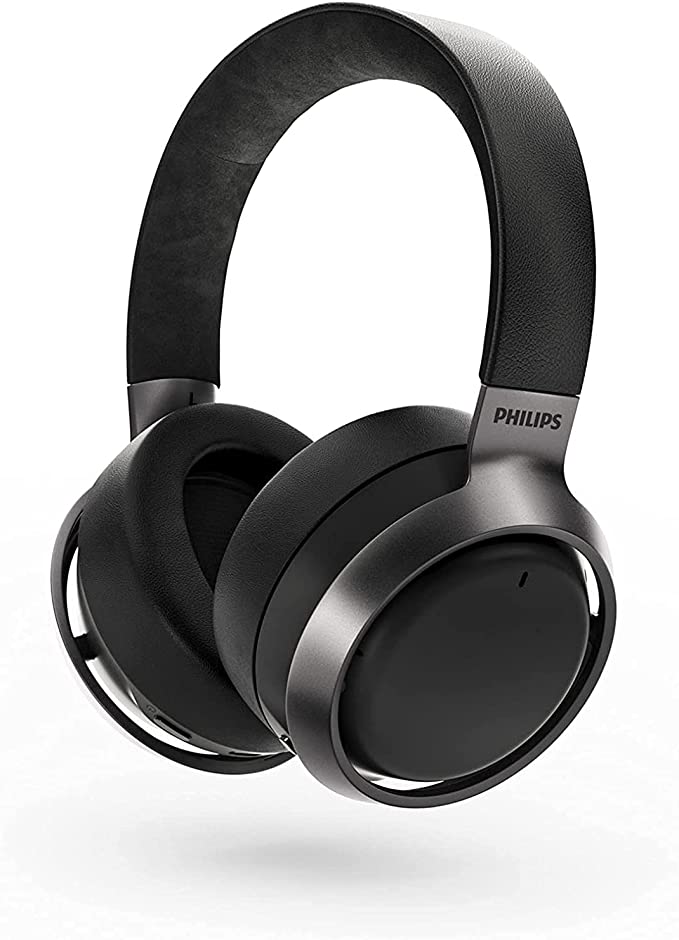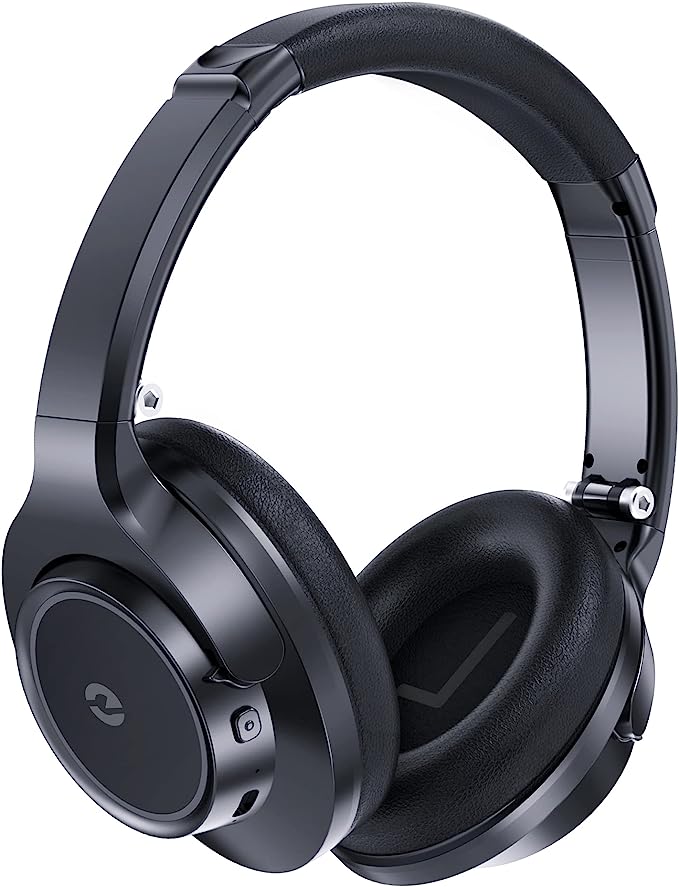AKG Pro Audio K72 Headphones: Unveiling the Science of Studio-Quality Sound
Update on May 19, 2025, 4:32 p.m.
In an age saturated with processed audio, where algorithms sculpt what we hear often before it even reaches our ears, the quest for authentic sound can feel like a journey back to an elusive truth. For creators, musicians, and discerning listeners, the ability to perceive sound in its unvarnished form isn’t just a preference; it’s a necessity. This is the sacred trust of the recording studio, and at its heart lies the humble yet critical monitor headphone. Today, we delve into a piece of equipment that aims to bring this professional clarity into a wider reach: the AKG Pro Audio K72 Over-Ear Closed-Back Studio Headphones. This isn’t just about a product; it’s about understanding the science and philosophy behind hearing sound as it truly is. AKG, a name etched into the annals of audio history with over 65 years of engineering microphones and headphones that have captured some of the world’s most iconic recordings, offers with the K72 a promise – a promise of professional insight, made accessible. So, let’s dim the studio lights, put on our analytical ears, and explore the sonic blueprint of the K72.

Beneath the Surface: Unpacking the K72’s Core Technology
To truly appreciate what the AKG K72 offers, we need to look beyond its matte black exterior and into the very elements that shape its sonic signature and user experience. It’s here, in the interplay of design and physics, that these headphones reveal their character.
The Driver’s Tale: The Heartbeat of Your Audio
At the very core of any headphone, the component that magically transforms electrical signals into the vibrations we perceive as sound, is the driver. Think of it as the engine of a car or the heart of a living organism; its performance is fundamental. The AKG K72 headphones house 40mm professional drivers. But what does that “40mm” really mean for your ears?
In dynamic drivers, which are common in headphones like the K72, a diaphragm (a thin, precise membrane) is attached to a voice coil, which sits within a magnetic field. When an audio signal (an electrical current) flows through the voice coil, it creates a fluctuating electromagnetic force, causing the coil and the attached diaphragm to vibrate rapidly. These vibrations displace air, creating sound waves that travel to your eardrum. The “40mm” refers to the diameter of this diaphragm. A larger diaphragm generally has the potential to move more air, which can be particularly beneficial for reproducing lower frequencies – the bass and sub-bass that give music its foundational weight and impact. It’s not just about brute force, though; a well-engineered 40mm driver, as aimed for in the K72, also strives for agility and precision across the entire sound spectrum.
This brings us to the K72’s specified extended frequency response of 16Hz - 20kHz. Imagine a painter with a full palette, from the deepest, richest crimsons to the most brilliant, piercing yellows. That’s analogous to what a wide frequency response offers the listener. The typical range of human hearing is roughly 20Hz to 20kHz. The K72 pushes those boundaries slightly, especially at the low end (16Hz), aiming to capture even the subtlest rumbles that you might feel as much as hear. At the high end, 20kHz ensures that the delicate shimmer of cymbals, the airy breathiness of a vocal, or the complex harmonics of an acoustic guitar are present. AKG emphasizes that the K72 provides a “precisely balanced response,” which is the cornerstone of reference-monitor accuracy. The goal here isn’t to flatter the music with artificial boosts in certain frequencies, but to present it honestly, allowing a sound engineer to make mixing decisions confident that they will translate well to other playback systems.
Complementing the drivers and frequency range is their sensitivity, rated at 112 dB SPL/V. Sensitivity measures how loud the headphones will play for a given input voltage. A higher sensitivity, like that of the K72, generally means the headphones can achieve ample volume without requiring a hugely powerful amplifier, making them more versatile with a range of audio sources.

Sanctuary of Sound: The Closed-Back Design Philosophy
Walk into any recording studio, and you’ll likely see artists 다양하게 활용하는 headphones, but for tracking vocals or instruments with a live microphone, one design reigns supreme: the closed-back. The AKG K72 proudly employs this closed-back, over-ear design, and the science behind it is crucial for both recording and focused listening.
Unlike open-back headphones that allow air and sound to pass freely through the earcups, closed-back headphones feature solid, sealed earcups. This construction serves two primary acoustic purposes. Firstly, it creates significant sound isolation, preventing the sound from the headphones from leaking out into the environment. This is indispensable during recording. Imagine a singer laying down a vocal track; if the backing track playing in their headphones bleeds into the sensitive vocal microphone, it creates a muddled, unprofessional recording that’s a nightmare to mix. The K72’s closed design aims to minimize this leakage.
Secondly, and equally important, it attenuates external noise, preventing the sounds of your environment from intruding into your listening experience. This allows for greater focus, whether you’re trying to discern subtle EQ changes in a mix or simply want to immerse yourself in music without aural distractions. AKG highlights that the K72 features a “new acoustic chamber, which sits between the ear cup and the hinge that connects to the headband.” While the exact proprietary details of this chamber aren’t public, the principle of such acoustic engineering is to further refine the seal and internal reflections, thereby enhancing the overall isolation. For a podcaster recording an interview, this means a cleaner recording of their guest. For a musician practicing in a shared space, it means less disturbance to others and a more private session. Some users of the K72 have indeed reported good isolation, allowing them to focus on their audio tasks.

Marathon Ready: The Ergonomics of Extended Listening
The most sonically perfect headphones in the world are of little use if they become uncomfortable after a short period. Audio professionals and dedicated hobbyists often wear headphones for hours on end, making ergonomic design paramount. The AKG K72 addresses this with several thoughtful features.
A standout is the self-adjusting headband. Instead of fiddly click-stop mechanisms that can wear out or create pressure points, the K72 utilizes a flexible, suspended headband that automatically conforms to the shape and size of the wearer’s head. This design aims to distribute the headphone’s weight (a relatively light 0.2 kilograms or approximately 7 ounces) evenly, reducing the likelihood of a “hotspot” titik tekanan pada kulit kepala. This seemingly simple innovation is an unsung hero for those long mixing sessions or extended practice routines.
The over-ear earpads are designed to fully encircle the ears rather than pressing directly onto them. This not only contributes to better acoustic isolation but also significantly enhances comfort by avoiding pressure on the sensitive outer ear. While comfort is subjective and some user experiences provided with the initial information mentioned finding the earpad material “a bit hard” or noted that the vinyl earpads on an older, similar model started “flaking after about 10 years,” many other users have praised the K72’s general comfort, especially for its price point, making it suitable for prolonged use. Breathable materials (though not explicitly detailed for the K72 in the provided text) are also key in over-ear designs to prevent excessive heat buildup.

The Conductive Path: Impedance, Cables, and Connections
The journey of sound from your audio source to the K72’s drivers relies on a clean and efficient electrical path. Here, aspects like impedance and cabling come into play. The AKG K72 features a low impedance of 32 Ohms. In very simple terms, impedance is the measure of total opposition that a circuit (in this case, the headphones) presents to an alternating current. A lower impedance generally means the headphones require less voltage from the source to reach a given listening level. This makes the K72 highly versatile, capable of being adequately driven by a wide array of devices – from professional studio consoles and audio interfaces to laptop headphone jacks and even some portable music players.
However, this is where an interesting nuance from user feedback emerges. While 32 Ohms is indeed “easy to drive,” some users have noted that the K72s “really need a headphone amp to sound its best,” otherwise sounding “flat and muffled” when connected directly to lower-power sources like phone or computer speaker jacks. This doesn’t contradict the low impedance rating. Rather, it highlights that while a device can make the headphones loud enough, a dedicated headphone amplifier often provides a cleaner, more robust signal with better current delivery. This can lead to improved dynamics, tighter bass, and clearer highs – essentially allowing the drivers to perform closer to their full potential. So, while not strictly necessary for basic operation, pairing the K72 with even a modest headphone amplifier can be a worthwhile upgrade for those seeking optimal fidelity.
The K72 comes with a generous 3-meter (approximately 9.8 feet) straight, single-sided cable. This length offers ample freedom of movement in a studio setting, preventing accidental tugs on your equipment. A single-sided cable entry (into one earcup) is also generally preferred for convenience and to avoid tangling compared to Y-split cables. A minor point of feedback from one user review mentioned that the 3.5mm stereo jack is not gold-plated and might “get some crackle,” potentially requiring reinsertion. While gold plating is often lauded for its corrosion resistance and conductivity, a clean, well-maintained non-plated connector can perform perfectly well. Ensuring the jack and port are free of dust and debris is always good practice. The headphones also include a screw-on 3.5mm to 6.3mm (1/4-inch) adapter, ensuring compatibility with professional audio interfaces and mixing consoles that commonly use the larger jack format. One user also reported the original K72 model as being quite durable, lasting about 10 years of bedroom studio use before the earpads started to degrade, which speaks to a decent build for its intended application and price segment, though another user found the construction to feel “cheap and plastic-y.”
The K72 in Action: Real-World Scenarios and Sonic Character
Beyond the technical specifications and scientific principles, how do the AKG K72 headphones perform in the environments they were designed for? They are positioned as “Studio Headphones,” specifically for tasks like tracking, monitoring during recording, and project studio mixing.
For the studio apprentice or home recordist, the K72 offers a valuable window into their audio. The isolation helps in capturing clean takes, and the generally balanced response (though with some user-noted character, which we’ll touch on) provides a more reliable reference than typical consumer headphones. Their comfort allows for the many hours often needed to learn the craft of mixing.
Content creators – podcasters, voice-over artists, and YouTubers – will appreciate the K72’s clarity for monitoring speech and the isolation for focused editing sessions. The long cable provides flexibility around a desk setup.
For the discerning listener who enjoys music with an analytical ear, the K72 can reveal details and separation in a mix that might be obscured by more “hyped” or bass-heavy consumer headphones. They offer a taste of studio neutrality.
However, it’s important to acknowledge the nuances in their sonic character, as highlighted by some of the provided user reviews. One reviewer with a keen ear mentioned a “definite emphasis in the 200Hz to 400Hz range and a little damping of highs,” leading to a sound that could be perceived as “somewhat muted and thumps in the lower mid and bass areas.” This user suggested they wouldn’t be ideal for making “critical EQ decisions.” This is a crucial point: while “reference-monitor accuracy” is the goal, every headphone, especially in more accessible price brackets, will have its own subtle sonic signature. Factors like earcup acoustics, driver materials, and damping all contribute. Some might find this K72 characteristic pleasing or non-problematic for tracking, while others aiming for absolute flatness for final mastering might seek alternatives, likely at a significantly higher price point. As the saying in audio often goes, “Every set of ears, every set of headphones, tells a slightly different story.” It’s about finding the tool that best suits your specific task and learning its individual characteristics.
Beyond the Wires: The Enduring Value of Authentic Sound
The AKG K72 Over-Ear Closed-Back Studio Headphones emerge as a compelling proposition. They thoughtfully blend AKG’s rich audio heritage with a design focused on delivering core professional features – detailed sound reproduction, effective isolation, and long-wearing comfort – at a price point that makes them accessible to a wide range of users. They are a testament to the idea that quality monitoring tools don’t have to be prohibitively expensive.
They may not possess the absolute nth-degree resolution of flagship audiophile cans or the tank-like build of some high-end professional models, and as some users experienced, they might benefit from a good amplifier to truly sing, or present a sound signature that requires a period of familiarization for critical mixing. But the K72 headphones successfully democratize a level of audio scrutiny that was once the exclusive domain of well-funded studios.
Ultimately, headphones like the AKG K72 are tools. They are a conduit, aiming to provide an honest translation of an electrical signal back into the rich, emotional language of sound. The real magic still lies in the music created, the stories told, and the human connection forged through audio. The enduring value of a headphone like the K72 is its ability to serve that connection faithfully, inviting us all to listen a little more deeply, a little more critically, and perhaps, a little more authentically.
